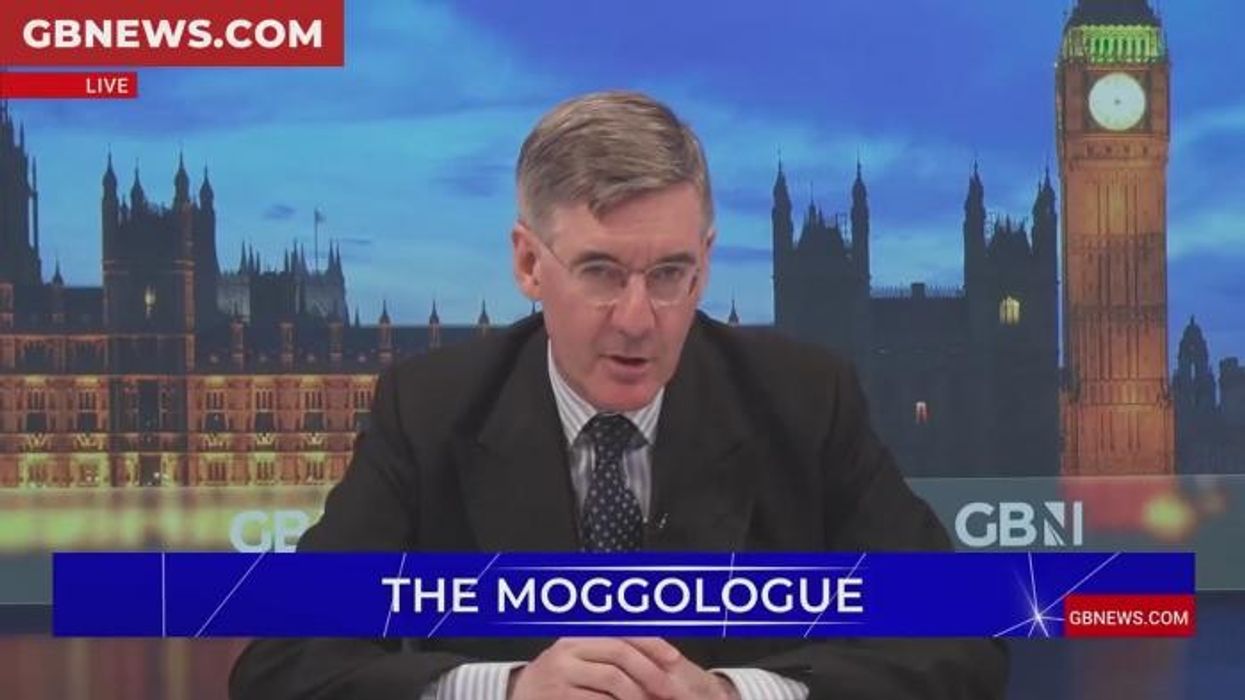Relative poverty is a mathematical certainty: Data is no substitute for common sense - Miriam Cates
The benefits system requires common-sense reform - not a myopic focus on one particular metric
Don't Miss
Most Read
Trending on GB News
Just a year after the general election, Sir Keir Starmer’s Labour government has suffered a major defeat. Controversial legislation always risks backbench rebellion, but normally the party whips can turn the screws enough to get it over the line. Not so with Tuesday’s Welfare Bill.
In an effort to secure Labour MPs’ approval, this legislation, introduced to make savings on Britain’s ballooning benefits bill – had to be watered down so severely that it is now unclear whether any money will be saved at all. So why did so many Labour MPs oppose it?
Many backbenchers, especially those who are newly elected, have made the point that they didn’t come into politics to cut benefits. As I wrote in my last column, the Labour Party and the welfare state are joined at the hip.
But one particular statistic spooked MPs: the proposed changes to Personal Independence Payments would push 150,000 disabled people into relative poverty.
It’s easy to understand why MPs were not willing to vote for such an outcome — there may be many people in receipt of benefits who shouldn’t be, but people with serious and genuine disabilities need support. While able-bodied individuals often have the opportunity to earn more by working extra hours or switching jobs, many disabled people simply don’t have that option.
But how was this statistic calculated, and what does “relative poverty” actually mean? Relative poverty is a mathematical measure: it refers to the number of people living on incomes below 60 per cent of the median income.
The median is a type of average — the middle point in a dataset. For example, if you had five people on salaries of £15,000, £20,000, £25,000, £35,000 and £70,000 a year respectively, the median income would be the ‘middle’ value of £25,000.
Using the means that outlying or ‘extreme’ values don’t distort our understanding of what is ‘normal’ or ‘ordinary’.

In the UK, the median household income is around £34,000. So to calculate the point at which a household is considered to be in ‘relative poverty’, we simply calculate 60 per cent of that value.
Sixty percent of £34,000 is £20,400. So, anyone in a household with an income below the £20 400 threshold is officially living in relative poverty.
Twenty thousand four hundred pounds is not a lot of money, but it's not destitution either. How ‘well-off’ people feel depends on many factors — whether they have savings, own their own home or have dependents. And by historical standards, even households on modest incomes have almost unimaginably higher living standards than a century ago.
Crucially, relative poverty is a mathematical certainty. There will always be a significant portion of the population — typically about a third — who fall below the 60 per cent threshold.
Imagine the economy grows and median income rises to £45,000. Suddenly, the relative poverty threshold becomes £27,000. Someone earning £26,000 — whose circumstances haven’t changed at all — would now be classed as living in poverty.
Or consider the reverse: if the median income collapsed to £30,000, but lower-income households received benefits to maintain their incomes at £20,000, they would no longer be counted as in poverty, even though nothing has changed in their actual standard of living.
To complicate matters, there are two ways to measure relative poverty: before and after housing costs. This can distort the picture even further.
Take relative pensioner poverty after housing costs. The number of pensioners in this category has fallen in recent years, but this is not because pensioners are earning more, but because housing costs disproportionately affect working-age families.
Pensioners are far more likely to own their homes outright, meaning they face few or no housing expenses.
As housing costs push more working-age people into relative poverty, pensioners are statistically lifted out of this measure, even though their incomes haven't increased.
‘Relative poverty’ tells us very little about someone’s life or standard of living; it's just a statistical construct. Even if the median income was £100,000 per year, there would still be millions of people classed as ‘poor’ under this measure.
Of course, it’s vital to track genuine hardship. But relative poverty doesn't measure destitution — and yet, it remains a hugely influential metric in shaping government policy.
Relative poverty isn’t the only example of misleading statistics. Gross Domestic Product (GDP) has long been pursued as a barometer of success.
Many government policies — including mass immigration — have been justified by their supposed positive impact on GDP.
But GDP on its own tells us nothing about living standards, debt, or productivity. During the pandemic, the same obsession with raw numbers led to disastrous policy choices. Lockdown support was based on daily death counts — but offered no context: not the average age of the deceased (which was higher than life expectancy), nor how those figures compared to typical years.
 More in Common polling shows the majority of Britons think the Government's approach to welfare has been too harsh | MORE IN COMMON
More in Common polling shows the majority of Britons think the Government's approach to welfare has been too harsh | MORE IN COMMONIn fact, although the mortality rate per 1000 people in 2020 was higher than in previous years, the death rate was by no means a historical anomaly. One only has to go back as far as 2007 to find a higher UK mortality rate than at any point during COVID-19.
Yet, due to an obsessive focus on one out-of-context number, enormous damage was done, including the addition of £400billion to the national debt, which has precipitated the current economic crisis.
“In God we trust. Everyone else must bring data,” so goes the famous quote by writer and mathematician W. Edwards Deming. But sometimes data, without understanding or context, can do more harm than good.
As a scientist, this may sound strange to say — but we should not be led by data, including opinion polls. What’s lacking in our politics — and much of our leadership — is wisdom and common sense based on empirical reality.
The benefits system, for example, requires common-sense reform. It is unwise to allow people to claim benefits without in-person appointments. It’s common sense that, if we subsidise conditions like ADHD, obesity, or mild mental health issues, the system will be abused.
And it’s plainly wrong to offer a benefits system that, in many cases, pays more than full-time work.
We don’t need statistics to tell us these things — we need common sense. Having the right information is essential for good decision-making. But there is a difference between being informed by data and being ruled by it.
Government is the business of making public interest decisions based on sound principles. A myopic focus on one particular metric is no substitute for common sense.
More From GB News











